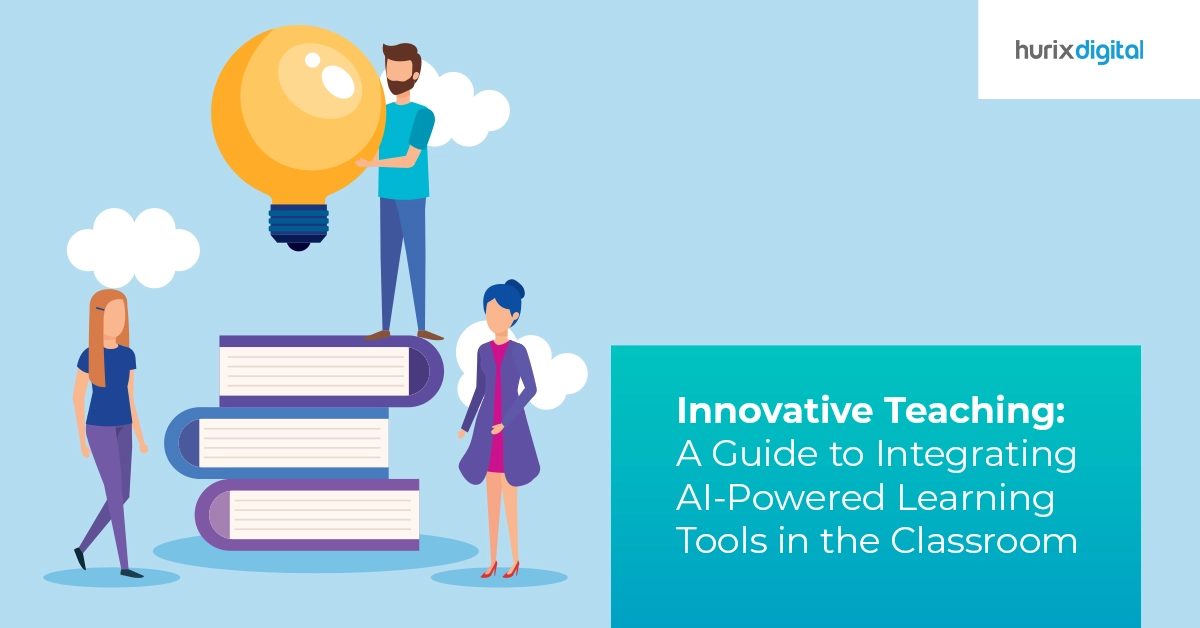Innovative Teaching: A Guide to Integrating AI-Powered Learning Tools in the Classroom
Gone are the days of one-size-fits-all education. Today, technology offers tools that cater to every learner’s unique strengths, weaknesses, and passions.
We’re talking intelligent tutors that adapt to learning styles, language translation apps that break down language barriers, and immersive simulations that bring history to life like never before.
Let’s dive headfirst into practical tips, engaging activities, and real-world examples that show how AI can become your secret weapon in the classroom.
Table of Contents:
- The Future of Education: AI-Powered Learning Tools
- Integration of AI-Powered Learning Tools in the Classroom
- Five Tips on Integrating AI-Powered Platforms in the Classroom
- Key Takeaways
The Future of Education: AI-Powered Learning Tools
The world of education is changing. The old methods of teaching and learning are becoming obsolete as new technologies like artificial intelligence are revolutionizing the way we learn.
The rise of AI-powered learning tools like intelligent virtual assistants, chatbots, and digital tutors is making it easier for students to find answers to their questions, get feedback on their work, and keep track of assignments.
These AI tools can also help teachers better teach by providing them with insights into student understanding and engagement. The rise of AI-powered learning tools such as artificial neural networks (ANNs) has led to a new wave of innovation in the educational sector.
With these tools, teachers can create personalized curricula for students based on their strengths, weaknesses, and interests. They can also ensure that students are engaged throughout the course material by adapting it to their needs.
Integration of AI-Powered Learning Tools in the Classroom
The first step toward integrating AI-powered learning tools into the classroom is to create a detailed plan for how you will implement these tools and manage them.
Begin by developing a classroom management model that includes:
- A schedule for when students can use these tools and for how long
- A list of topics, assignments, or discussions to be used with these tools
- A plan for how students will use these tools together in groups or individually
You should also consider how you will assess the impact of these generative AI tools on your classroom management model. Doing so will help you determine whether or not your investment in these tools was worth it.
Also Read: Transforming Education with Smart Classrooms: The Role of AI
Five Tips on Integrating AI-Powered Platforms in the Classroom
Teaching is a profession that requires a lot of patience and creativity. The traditional methods of teaching are not enough to engage the students in the classroom. It is time for teachers to upgrade their methods and integrate AI-powered learning tools in their classrooms.
Here are some tips and tricks for getting started with AI-powered learning:
1. Develop Personalized Lesson Plans
Use machine learning algorithms to determine which topics each student needs to learn next and how much time they should spend on each topic.
Then, create an individualized plan for each student based on their strengths and weaknesses. This will allow you to teach multiple students at once while still addressing their individual needs.
For instance, if a student is struggling with concepts in math, the AI-powered learning tool will recommend additional reading material or videos that will help them understand the material better.
2. Keep Track of Student Progress
AI-powered learning tools can provide teachers with data about their student’s progress through the course. This includes things like how many questions they get wrong on a quiz and what concepts they struggle with most often, but it’s up to the teacher to use that data wisely.
If you have access to this information, make sure you’re using it as much as possible to tailor your lesson plans accordingly and ensure each student is receiving the right kind of attention.
For example, you can see how much time students spend on your lessons and how many times they repeat them. This information will help you decide whether to repeat a lesson or move on to another one.
3. Employ Intelligent Virtual Assistants
AI-powered tools can help teachers prepare for lessons, administer tests, track student progress, and more. Teachers can use these tools as teaching assistants to free up time for other tasks or to provide students with additional support when needed.
For example, teachers can use AI-powered tools to collect assignments from students before class starts so they have time to grade them before starting class instead of having to do it during class time or at home after school hours.
This will not only save teachers time but also allow them more flexibility with how they teach the material. This is because teachers will be able to focus on what’s most important instead of spending unnecessary time grading assignments or preparing for lessons that AI-powered tools could easily automate.
4. Engage Students in Active Learning Practices
It’s no secret that the best way to learn is by doing. And when students are allowed to actively engage with a topic, they are much more likely to retain that information long-term. But how do you get students engaged?
One way is through gamification — the use of game elements and game design techniques to improve user experience — which can be used in any subject or topic.
For example, if you’re teaching your students about science and want them to retain their knowledge, you can use tools to create interactive quizzes on various topics.
These types of quizzes allow students to interact with each other while also learning material at the same time. This will not only improve their retention rate but also help them learn from one another as well.
5. Make the Learning Process Interactive
Students these days feel more comfortable when they have access to technology in their classrooms.
They can connect with other students, teachers, and parents through social media platforms such as Facebook, Twitter, and Instagram. If you want to engage them in your class, you must make use of these tools as well.
A good example would be using an online class management system where students can post questions, submit assignments, and interact with each other through forums or discussion boards. You don’t even have to leave your desk because you can use this platform from anywhere — home or office.
Also Read: AI in Education: Five Steps to Integrate AI into Your Curriculum
Key Takeaways
It’s easy to see how AI in education can enhance and enrich the learning experience. It’s also easy to overlook these technologies in favor of more established methods and activities.
But if you’re looking for innovative, engaging ways to help your students learn, there have never been so many options at your fingertips.
Hurix Digital’s tools offer several powerful learning features that can help to make the classroom experience more engaging and effective for students. They have more to offer than just AI, with cool features like motion graphics and scenario-based learning built on real-world problems.
Those looking to improve their classroom teaching methods will want to consider these tools. Contact us today!

SVP & Head – Hurix Technology Solutions
Global Delivery head with 25 years of working experience in NYC investment banks and fintech companies. Hands-on technology delivery management and program management, accountable for stakeholder relationships, Strategic roadmap, P&L, Revenue growth, Account Management, and employee satisfaction.









